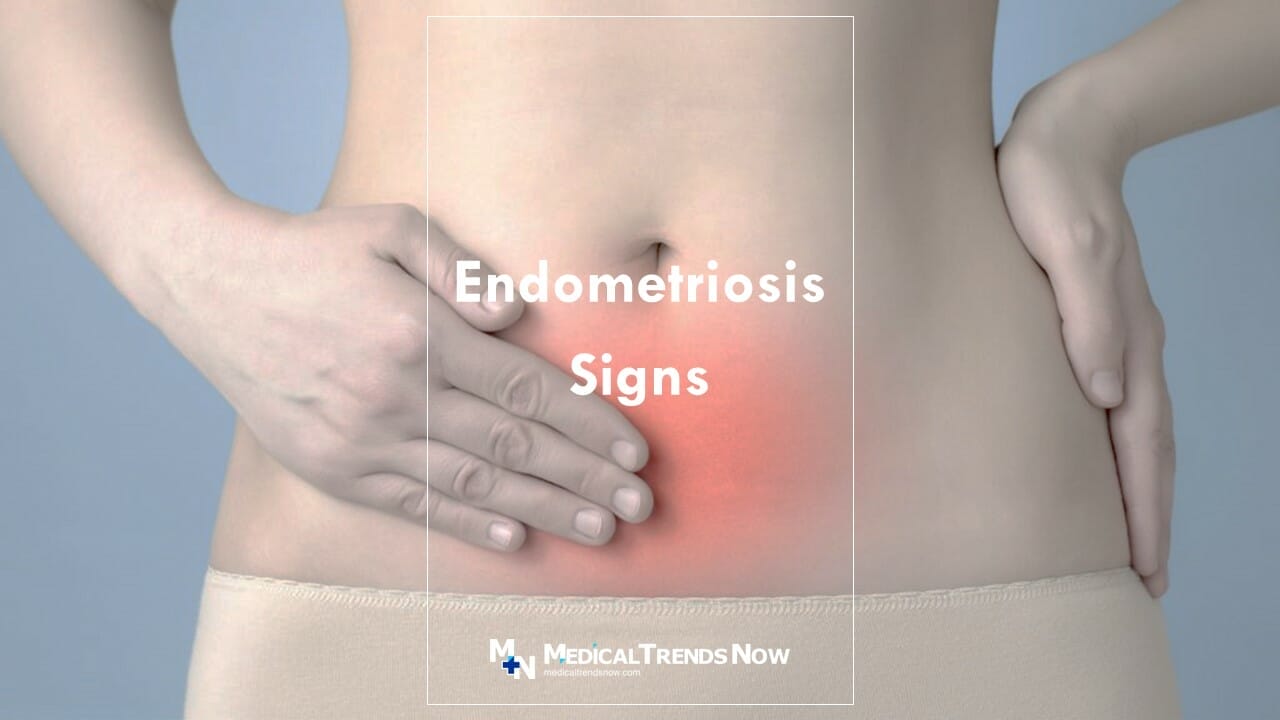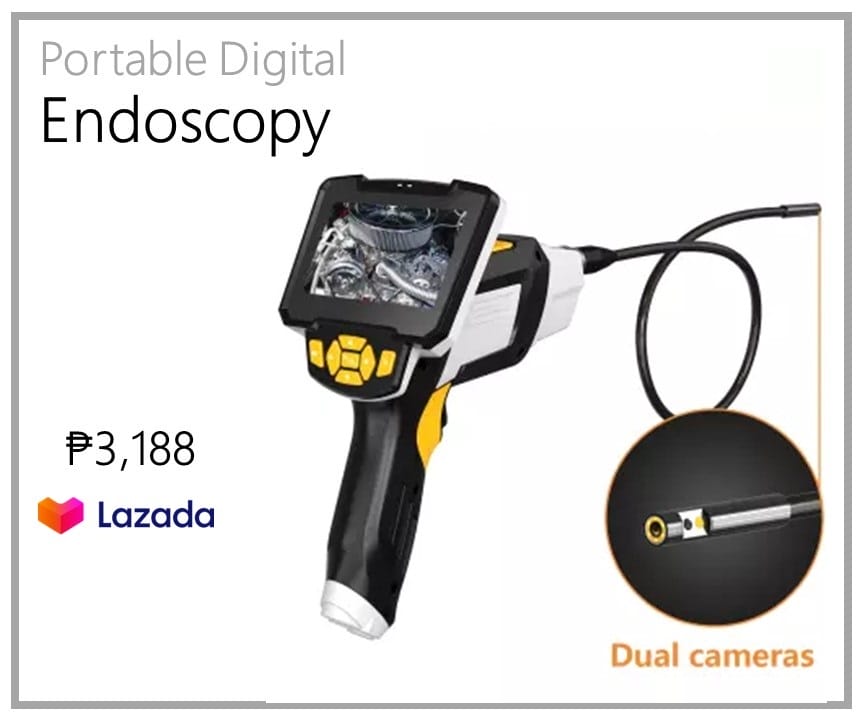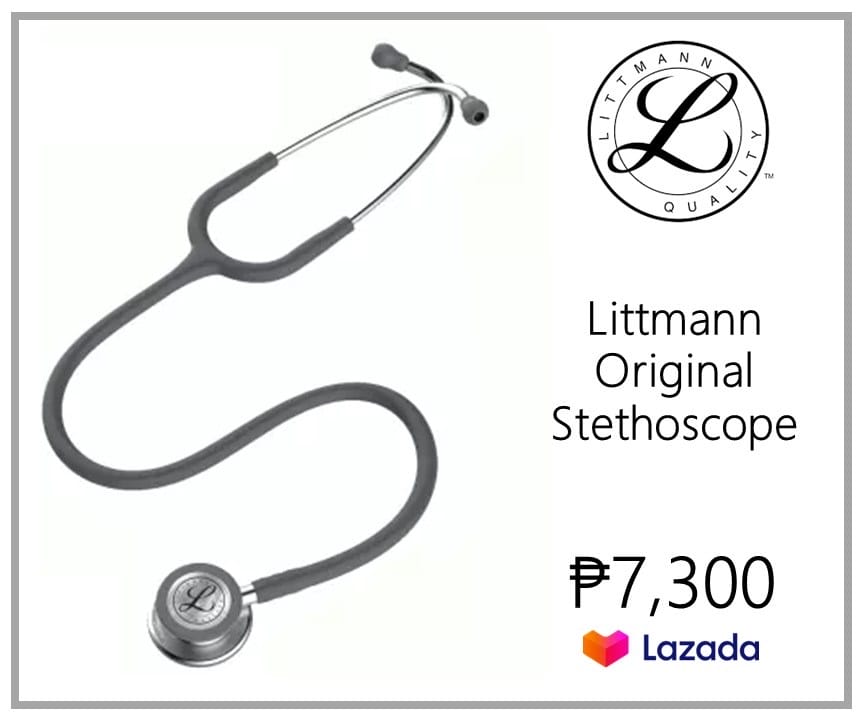Table of Contents
Endometriosis is a painful condition that affects women during their childbearing years. It occurs when the tissue that lines the uterus grows outside of the uterus. This can cause pain, heavy bleeding, and infertility. Endometriosis affects about 1 in 10 women of childbearing age. There is no cure for endometriosis, but treatments are available to help relieve pain and improve fertility. Endometriosis can cause pain in the lining of the uterus. Learn about endometriosis signs, causes, treatment, and prevention for women.
What Is Endometriosis?
Endometriosis is a disorder in which the tissue that lines the uterus, called the endometrium, grows outside of the uterus. Endometriosis most commonly affects the ovaries, Fallopian tubes, and the tissue lining the pelvis. In rare cases, endometriosis has been found in other parts of the body, such as the brain, lungs, and skin.
Endometriosis is often accompanied by pelvic pain and can lead to infertility. While there is no cure for endometriosis, treatments are available to help relieve symptoms and improve fertility.
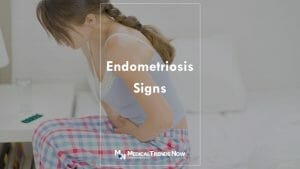
What Are the First Signs of Endometriosis?
Endometriosis is a medical condition that affects women of reproductive age. In endometriosis, the endometrium (the tissue that lines the uterus) grows outside of the uterus and causes pain, fatigue, and other symptoms. Knowing the first signs of endometriosis can help women get treatment as quickly as possible.
The most common sign of endometriosis is pelvic pain. This pain may be felt in the abdomen and lower back area and can range from mild to severe. Pain may increase during periods or when engaging in sexual activity. Other symptoms include irregular bleeding, painful urination or bowel movements, bloating or swelling in the abdomen, and infertility due to blocked fallopian tubes or damaged ovaries caused by endometrial growths.
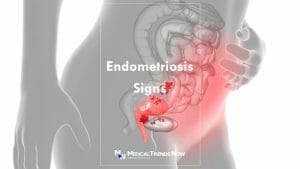
Types Of Endometriosis
There are four types of endometriosis: superficial, ovarian, deeply infiltrating, and cervical.
Superficial endometriosis is the most common type. It involves the lining of the pelvic cavity, including the ovaries, fallopian tubes, and outer surfaces of the uterus.
Ovarian endometriosis is less common than superficial endometriosis. It occurs when tissue similar to the uterus lining grows on or around the ovaries.
Deeply infiltrating endometriosis is the least common type. It occurs when endometrial tissue invades surrounding tissues, such as the rectum or bladder. This type can be difficult to treat because it can damage surrounding organs.
Rectovaginal endometriosis is when endometrial tissue grows in the rectum or vagina.

How Many Women Suffer From Endometriosis?
It’s estimated that 1 in 10 women suffer from endometriosis. That’s a staggering statistic because endometriosis is a debilitating and often painful condition. This chronic and often painful condition can significantly impact a woman’s quality of life.
Endometriosis Signs And Symptoms
Endometriosis is a chronic condition that can cause pelvic pain and infertility. The condition occurs when tissue from the lining of the uterus (the endometrium) grows outside of the uterus. This can cause inflammation, scarring, and pain.
There are several signs and symptoms of endometriosis, including:
- Pelvic pain or cramping that is worse during menstruation
- Pain during intercourse
- Painful bowel movements or urination
- Excessive bleeding during menstruation
- Bleeding between periods
- Infertility
Others may also experience fatigue, diarrhea, constipation, bloating, or nausea, especially during menstrual periods.
Endometriosis can also cause psychological distress due to the chronic nature of the disease and its impact on quality of life.
If you experience any of these symptoms, you must see a doctor for an evaluation. While there is no cure for endometriosis, treatments are available to help manage the symptoms and improve quality of life.
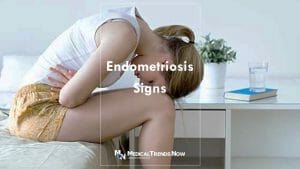
What Causes Endometriosis?
Endometriosis is estimated to affect more than 11 percent of reproductive-aged women worldwide. The cause of endometriosis is unknown, but it is thought to be due to a combination of hormonal, genetic, and environmental factors. There are also several theories of what’s causing endometriosis. One theory suggests that endometriosis is caused by retrograde menstruation. This is when menstrual blood containing endometrial cells flows back through the fallopian tubes and into the pelvic cavity instead of out of the body. The endometrial cells then implant themselves on organs in the pelvic cavity. Another theory suggests that endometrial cells may be able to travel through the lymphatic system or blood vessels to reach other parts of the body.
Endometriosis is a complex disease with no known cure.
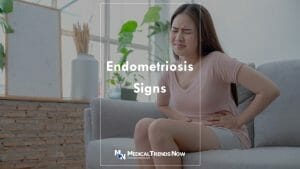
Endometriosis Diagnosis
There is no one test to diagnose endometriosis, but your doctor may recommend various tests to rule out other conditions and confirm the diagnosis. A pelvic exam, ultrasound, and laparoscopy are some of the tests that may be used to diagnose endometriosis.
Treatments for Endometriosis
Treatment options vary depending on the severity of your symptoms but can include everything from over-the-counter pain medication to surgery.
There is no cure for endometriosis, but treatment can help relieve symptoms and improve fertility. Medications to treat endometriosis include oral contraceptives, gonadotropin-releasing hormone (GnRH) agonists, antagonists, progestins, and pain relievers. If you have mild endometriosis, your doctor may recommend over-the-counter pain medication or hormonal birth control to help reduce your symptoms. If you have moderate to severe endometriosis, your doctor may recommend surgery to remove the tissue growth. In some cases, they may prescribe hormone therapy to help shrink the growth.
No matter what treatment option you and your doctor choose, it’s important to remember that endometriosis is a chronic condition that can come back after treatment. However, with the right treatment plan, you can live a healthy life despite this condition.
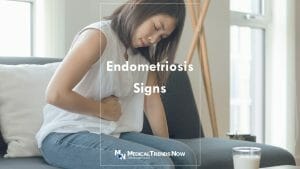
How To Prevent Endometriosis?
Endometriosis is a common and painful condition that affects women of reproductive age. It occurs when the tissue that lines the inside of the uterus (the endometrium) grows outside of the uterus. Endometriosis can cause pelvic pain, pain during intercourse, and infertility.
There is no cure for endometriosis, but there are treatments that can help relieve symptoms and improve fertility. Here are four tips to help prevent endometriosis:
- Keep your weight in check: Being overweight or obese increases your risk of endometriosis. Maintaining a healthy weight can help reduce your risk.
- Exercise regularly: Exercise has many health benefits, including reducing your risk of endometriosis. A moderate amount of exercise is best – too much exercise can actually increase your risk.
- Lower Your Estrogen Levels. There are a number of ways to lower your estrogen levels and help relieve the symptoms of endometriosis. One way is to take birth control pills, patches, or vaginal rings with low doses of estrogen, which can help to regulate your hormone levels. Another option is to have surgery to remove any endometrial tissue built up outside the uterus.
- Eat a healthy diet. Eat plenty of fruits, vegetables, and whole grains. These foods are high in fiber and antioxidants, which can help reduce inflammation. Second, limit or avoid red meat and processed foods, as these can increase inflammation.
- Avoid too much intake of alcohol
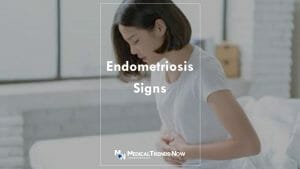
When To Visit A Doctor For Endometriosis
If you have any of the following symptoms, you should visit a doctor to see if you have endometriosis:
- Pelvic pain that gets worse during your period
- Pain with sex
- Gut issues like diarrhea or constipation during your period
- Bleeding from your rectum or vagina during your period
- Blood in your urine during your period
Endometriosis is a condition where the tissue that lines the inside of your uterus grows outside of it. This can cause pain and other problems. There is no cure for endometriosis, but treatments can help lessen symptoms.
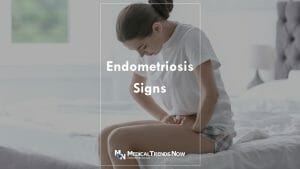
Which Doctor Can Help With Endometriosis
If you’re struggling with endometriosis, you might wonder which type of doctor can help. The truth is, there are a few different types of doctors who can treat this condition. Here’s a look at some of the most common:
Gynecologist: A gynecologist is a doctor who specializes in the female reproductive system. If you have endometriosis, your gynecologist can provide you with treatment options and refer you to other specialists if needed.
OB-GYN: An OB-GYN is a doctor who specializes in both obstetrics (pregnancy) and gynecology. If you’re pregnant and have endometriosis, your OB-GYN will be able to treat your condition and help ensure a healthy pregnancy.
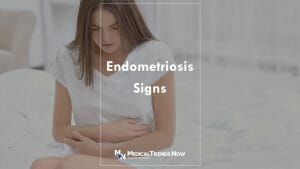
Endometriosis Stages
Endometriosis is a disorder in which the tissue that normally lines the uterus grows outside of it, most commonly in the pelvic area. This condition affects an estimated 10% of women worldwide and can cause severe endometriosis pain, infertility, and other health complications of endometriosis. To better understand this disorder, it is important first to know what stages endometriosis typically goes through.
The four stages of endometriosis range from minimal to severe: stage 1 being minimal and stage 4 being extreme. In stage 1 endometriosis, small lesions or cysts may be present, but no scar tissue has been formed yet. Pain during intercourse or menstruation may occur but is usually mild. In stage 2, scar tissue starts forming, and deeper lesions can be found on organs such as the ovaries or fallopian tubes.

Getting Pregnant With Endometriosis
Endometriosis is a serious medical condition that affects women of reproductive age. It can cause pain, infertility, and other issues during the menstrual cycle. Many women with endometriosis struggle to become pregnant due to this condition. The good news is it is possible to get pregnant with endometriosis if you are aware of the signs and take proactive steps toward improving your fertility.
Common signs of endometriosis include pelvic pain, heavy periods, painful intercourse, and difficulty getting pregnant. If you experience any of these symptoms, it’s important to talk to your doctor immediately so they can diagnose the issue and provide treatment options that best suit your needs. Treatment may include medication or surgery to improve fertility outcomes for those trying to conceive with endometriosis.
Surgery For Endometriosis
Surgery is a viable treatment option for women with endometriosis, a condition in which uterine tissue grows outside the uterus. Women who experience chronic pelvic pain and other signs of endometriosis may seek relief, and surgery can provide it. While not all cases need to be treated surgically, surgery can help remove endometrial growths, reduce symptoms and improve fertility in some cases.
Endometriosis signs include severe menstrual cramps that don’t respond to medication, heavy periods or bleeding between periods, abdominal pain before and during menstrual cycles, painful sex, and digestive issues like constipation or diarrhea. If you are experiencing these symptoms regularly, it’s important to speak with your doctor about the possibility of an underlying medical condition like endometriosis that could require surgical intervention.
How Women Get Endometriosis
Endometriosis is a condition that affects many women. It occurs when endometriosis tissue similar to the lining of the uterus grows outside of it, causing severe and chronic pain. Knowing the signs and symptoms can help women recognize endometriosis and get treatment as soon as possible.
The most common symptom of endometriosis is pelvic pain that worsens around the time of menstruation. Other signs include painful intercourse, abdominal cramps, lower back pain, diarrhea during periods, constipation during periods, bleeding between menstrual cycles, and fatigue. Women may also experience nausea or vomiting during their menstrual cycle due to endometriosis.
It’s important for women to speak with their doctor if they’re experiencing any of these symptoms for long-term relief from endometriosis.
FAQs Endometriosis
Who Is At Risk Of Getting Endometriosis?
Endometriosis is a painful and often debilitating condition affecting millions of women worldwide. The exact cause of endometriosis is unknown, but it is thought to be due to a combination of genetic and environmental factors.
Women of childbearing age are the most likely to develop endometriosis, but the condition can also occur in postmenopausal women. Endometriosis is more common in women who have never given birth between the ages of 25 and 35, although it can occur in any woman regardless of her reproductive history.
What Are The Foods Or Drinks To Avoid Endometriosis?
There are many different things that can trigger or worsen endometriosis symptoms. For some people, certain foods or drinks may be the culprit. While there is no one-size-fits-all diet for endometriosis, avoiding certain foods or drinks may help to lessen symptoms in some people.
Some common trigger foods or drinks include:
- caffeine
- alcohol
- dairy
- sugar
- red meat
- and processed foods.
Everyone is different, so paying attention to your body and figuring out what works for you is important. If you suspect that a particular food or drink is triggering your symptoms, try eliminating it from your diet for a few weeks to see if there’s a difference.
Of course, changing your diet isn’t always easy. But it may be worth it if avoiding certain foods or drinks helps to ease your endometriosis symptoms.
What Should I Ask My Doctor?
If you’re dealing with endometriosis, you’re probably wondering what you can do to manage the pain. You might also have questions about your fertility and whether or not endometriosis will impact your ability to have children. Here are a few questions to ask your doctor about endometriosis.
- What are the best ways to manage pain associated with endometriosis?
- Is there anything I can do to improve my fertility if I have endometriosis?
- What are the risks of leaving endometriosis untreated?
- What are the symptoms of endometriosis?
- Could endometriosis be causing my pain or other problems?
- What tests can confirm whether I have endometriosis?
- What are the treatment options for endometriosis?
- Will treatment for endometriosis improve my chances of getting pregnant? Are there any risks associated with endometriosis surgery?
- How will you monitor my progress after treatment for endometriosis?
What Will Happen If I Don’t Treat Endometriosis?
If you don’t treat endometriosis, the tissue will continue to grow and can cause problems such as pain, infertility, and heavy bleeding. The tissue can also spread to other parts of your body and damage organs. Untreated endometriosis can lead to a number of health complications, so it’s important to get treatment as soon as possible.
What Are The Risk Factors For Endometriosis?
Endometriosis is a chronic, painful condition that affects women of childbearing age. The condition occurs when the tissue that lines the uterus (the endometrium) grows outside of the uterus. Endometriosis can cause pelvic pain, infertility, and other problems.
There are several risk factors for endometriosis, including:
- Age: Endometriosis is most common in women in their 30s and 40s.
- Family history: Women with a family history of endometriosis are more likely to develop the condition.
- Obesity: Obesity is a risk factor for endometriosis.
- Previous surgery: Women who have had surgery to remove the ovaries or fallopian tubes are at increased risk for endometriosis.
Period Pain: Could It Be Endometriosis?
Yes. Endometriosis is a common cause of pain, particularly during menstruation. Other symptoms include painful sexual intercourse, lower back pain or pain in the left shoulder blade area (due to involvement of the diaphragm), and rectal bleeding (from the involvement of the bowel).
Why Does Endometriosis Cause Pain And Health Problems?
Endometrial tissue responds to hormonal influences just like the endometrium inside the uterus. Hormone levels change during a woman’s menstrual cycle, which can cause these misplaced cells to swell and bleed. The blood is then absorbed by nearby organs, causing inflammation and pain.
How Common Is Endometriosis?
Endometriosis is a common condition, affecting between 10 and 15 percent of women worldwide. It affects more than 5 million women in the United States alone.
Who Gets Endometriosis?
A: Endometriosis can occur in any woman of reproductive age, though it’s most common among women in their 30s and 40s.
Is Endometriosis Hereditary?
Women with a family history of endometriosis are more likely to develop the disease themselves. Q: What Causes Endometriosis? A: Endometriosis is caused by retrograde menstruation when the menstrual tissue is carried backward through the fallopian tubes to the pelvis and uterus. This process is sometimes called “retrograde menstruation.”
How Is Endometriosis Treated?
Treatment for endometriosis depends on the location and severity of the disease. Surgery is typically used to remove endometrial deposits. A number of different types of surgery exist, including laparoscopy, hysterectomy, and laser surgery.
How Can I Prevent Endometriosis?
There is no way to prevent endometriosis. The only treatment for the disease is surgery.
Why Is Endometriosis Associated With Pain?
The endometrial tissue is not supposed to be in the pelvis. It can make its way back through the fallopian tubes and attach to the walls of the pelvic organs, causing inflammation and pain.
How Does Endometriosis Affect Fertility?
Women who have endometriosis are more likely to experience difficulty conceiving. This is because the body’s immune system may attack the fetus as it tries to implant in the uterus. Women with endometriosis should talk to their doctors about fertility.
Is There A Home Remedy For Endometriosis?
There are a variety of home remedies that can help to relieve the discomfort caused by endometriosis. Avoiding stress, getting enough sleep, and exercising regularly can also help you feel better.
Conclusion: Endometriosis Signs of a Painful Bowel for Women
In conclusion, endometriosis is a painful reality for many women. The condition can significantly impact a woman’s quality of life and lead to infertility. While there is no cure for endometriosis, there are treatments available that can help manage the pain and other symptoms associated with the condition. If you think you may have endometriosis, talk to your doctor about your symptoms and treatment options.
Sources: Endometriosis Signs of a Painful Bowel for Women
- How endometriosis affects pregnancy – Health Direct
- Fertility & pregnancy with endometriosis – Jean Hailes
- Endometriosis Signs, Symptoms and Causes – Mayo Clinic
- Endometriosis | Johns Hopkins Medicine
- Endometriosis – World Health Organization (WHO)
- Endometriosis | Office on Women’s Health
- Know the signs and symptoms of endometriosis – The State of Queensland (Queensland Health)
Disclaimer
This website is intended to educate both members of the general public and those working in the medical field on the prevalence, causes, and methods for preventing, diagnosing, and treating diseases that affect people throughout their lives. This website’s content is provided solely for informational reasons and is not meant to serve as a substitute for the advice of a qualified medical practitioner.

